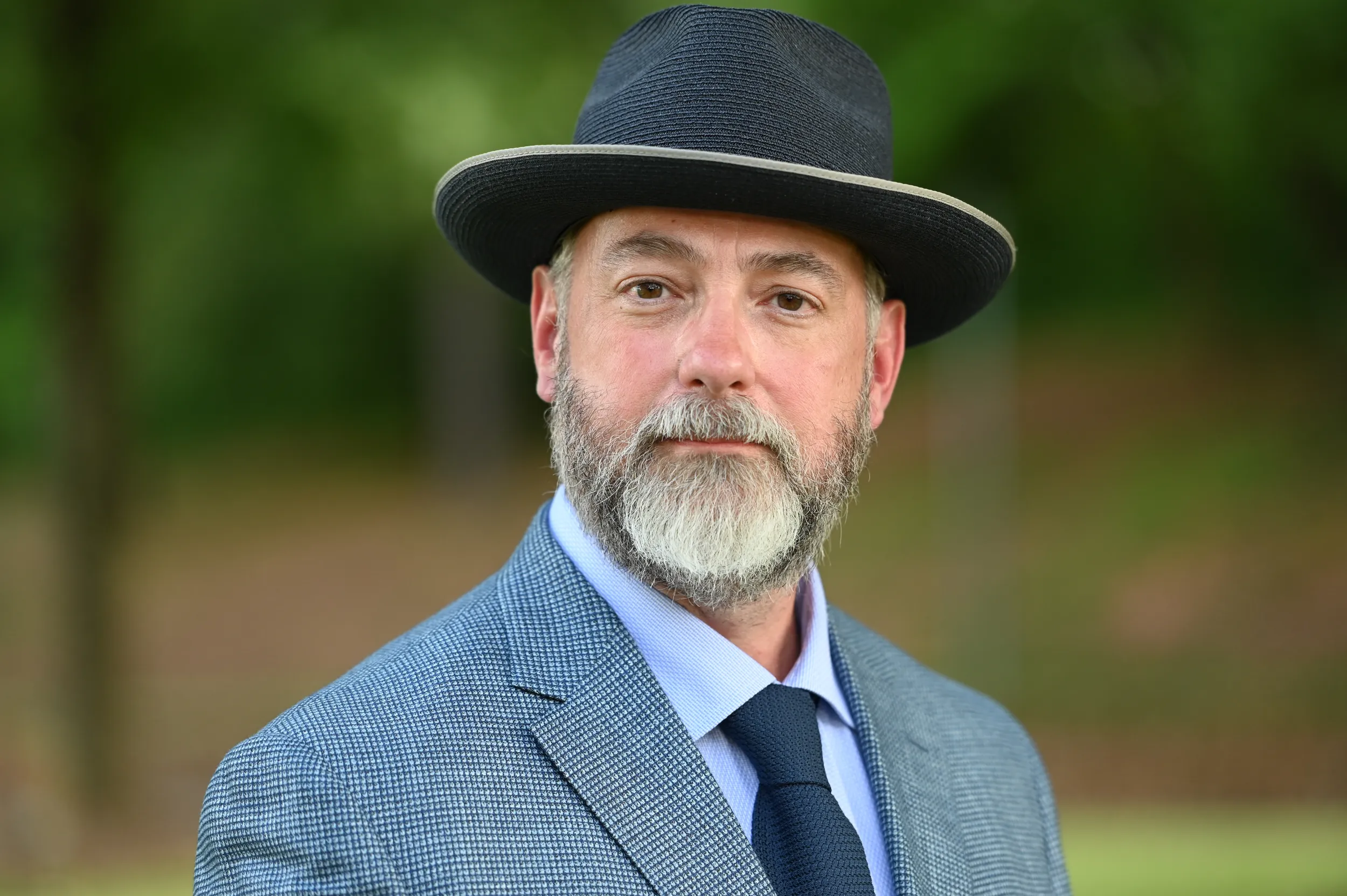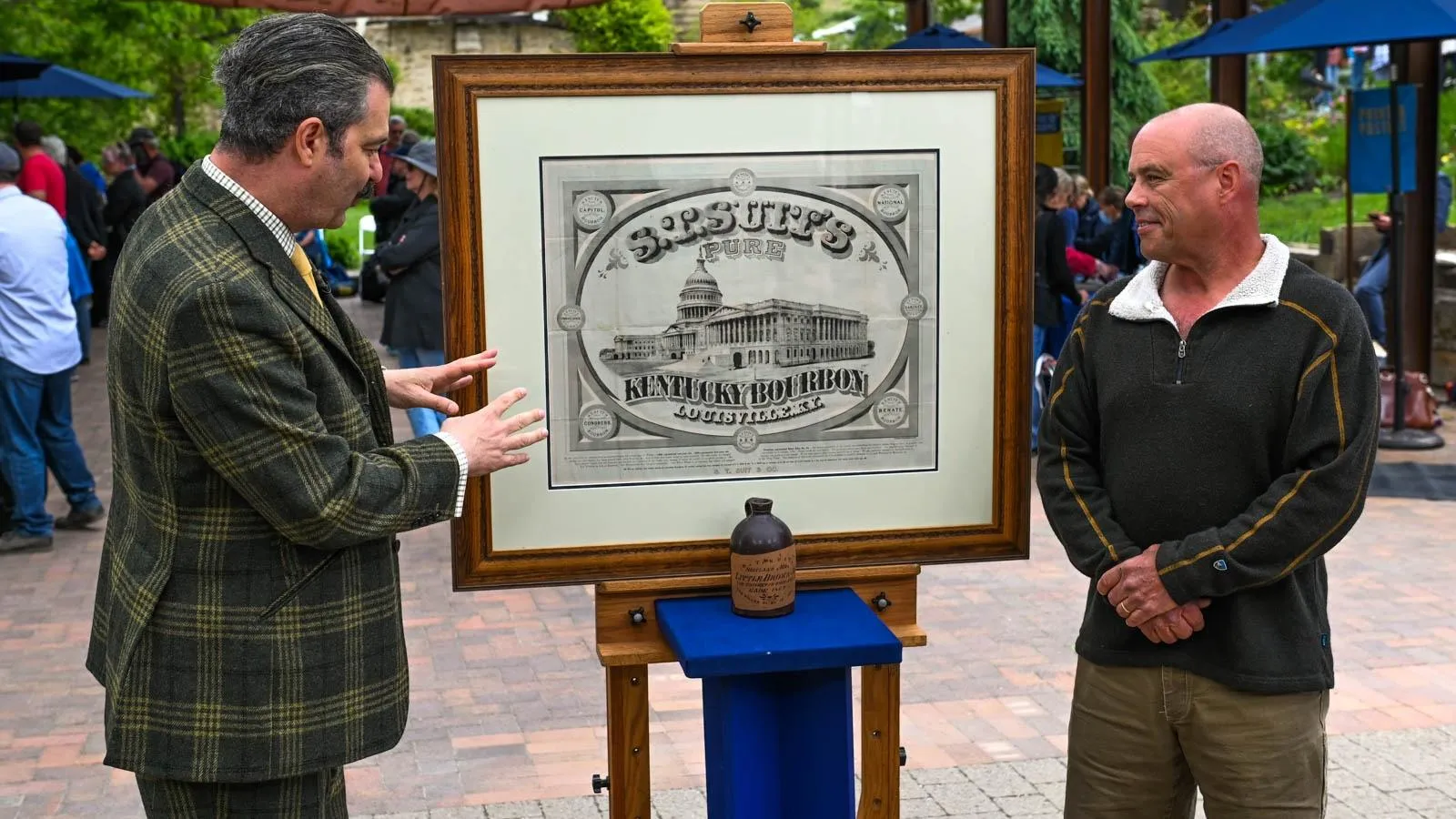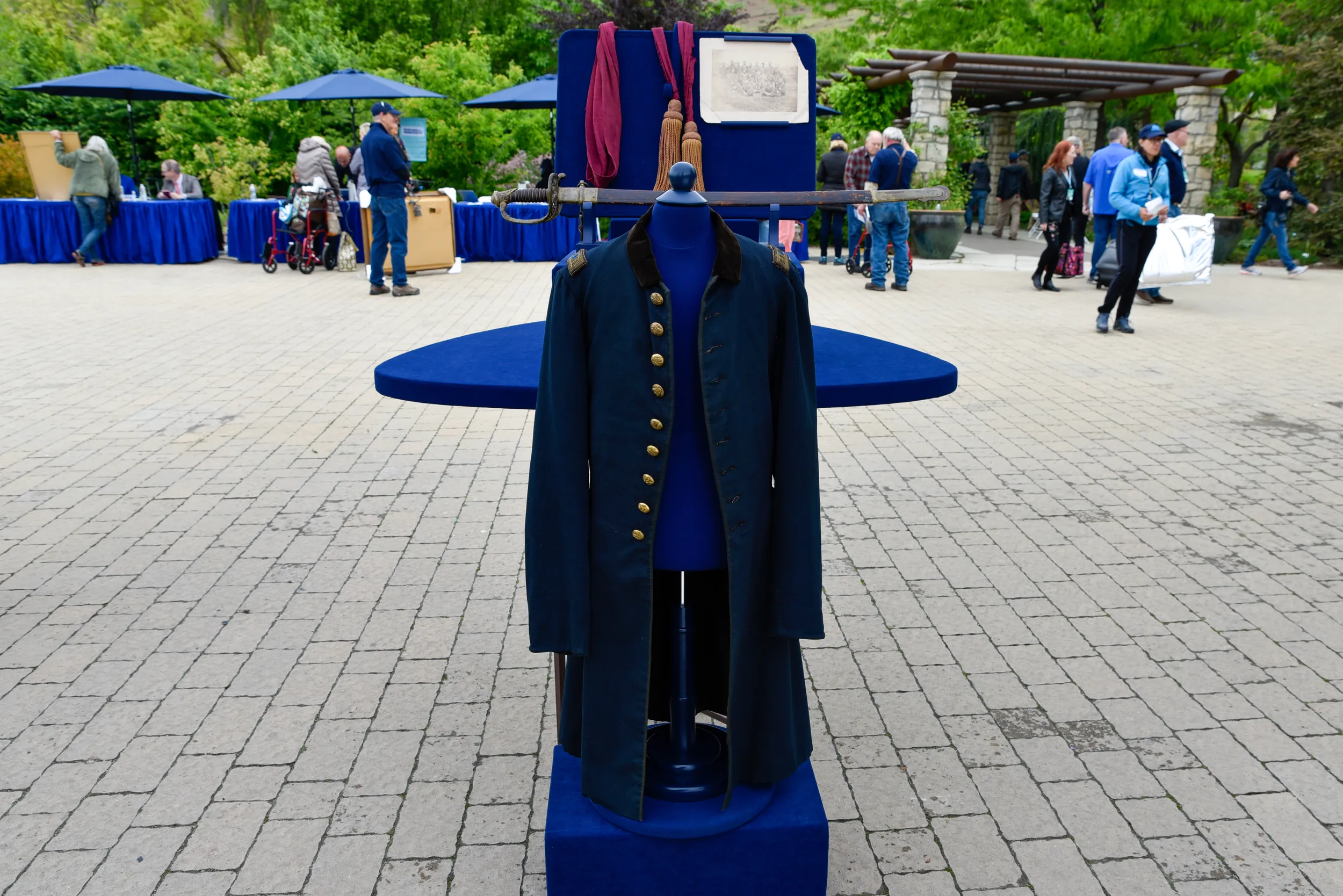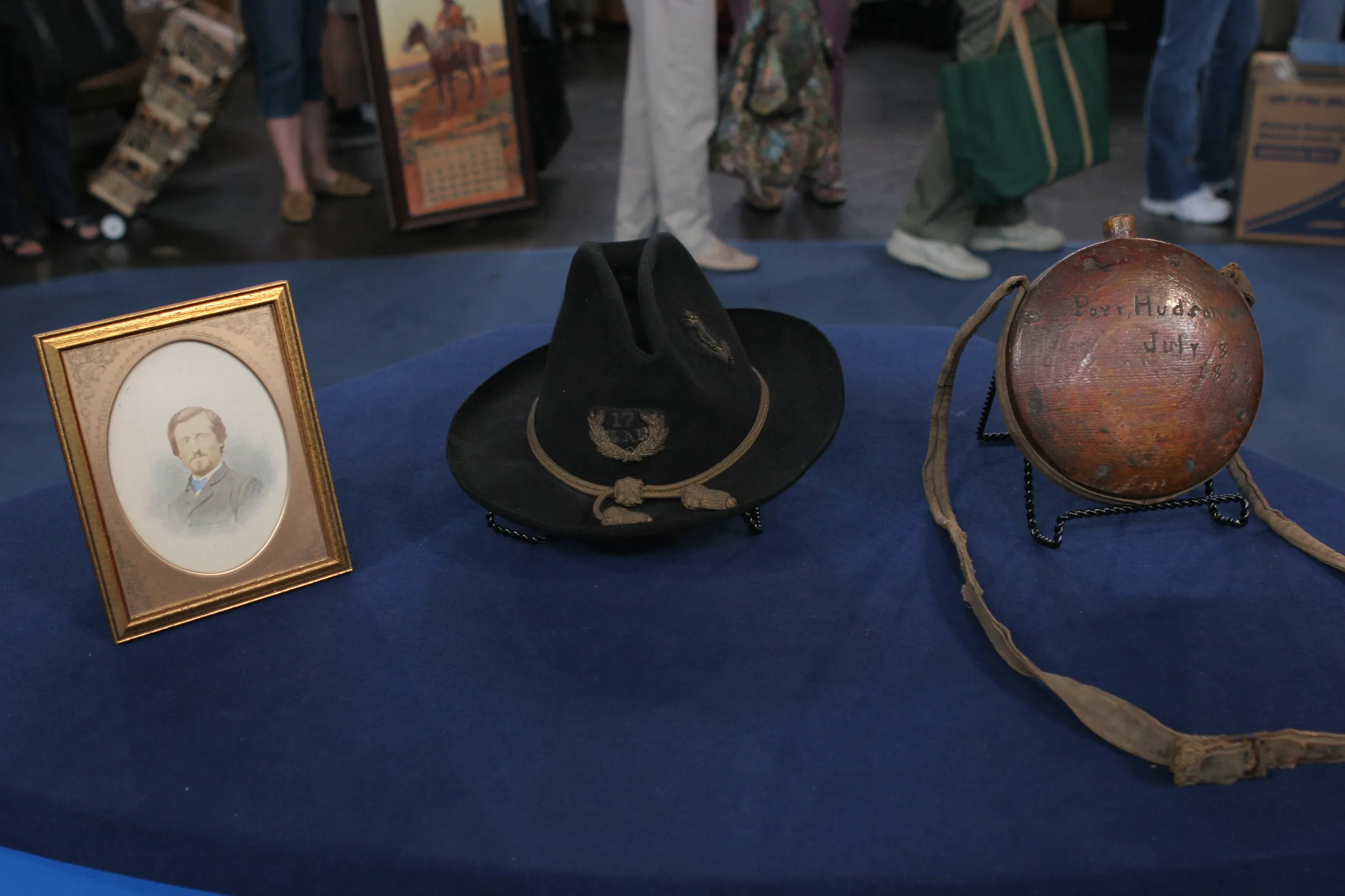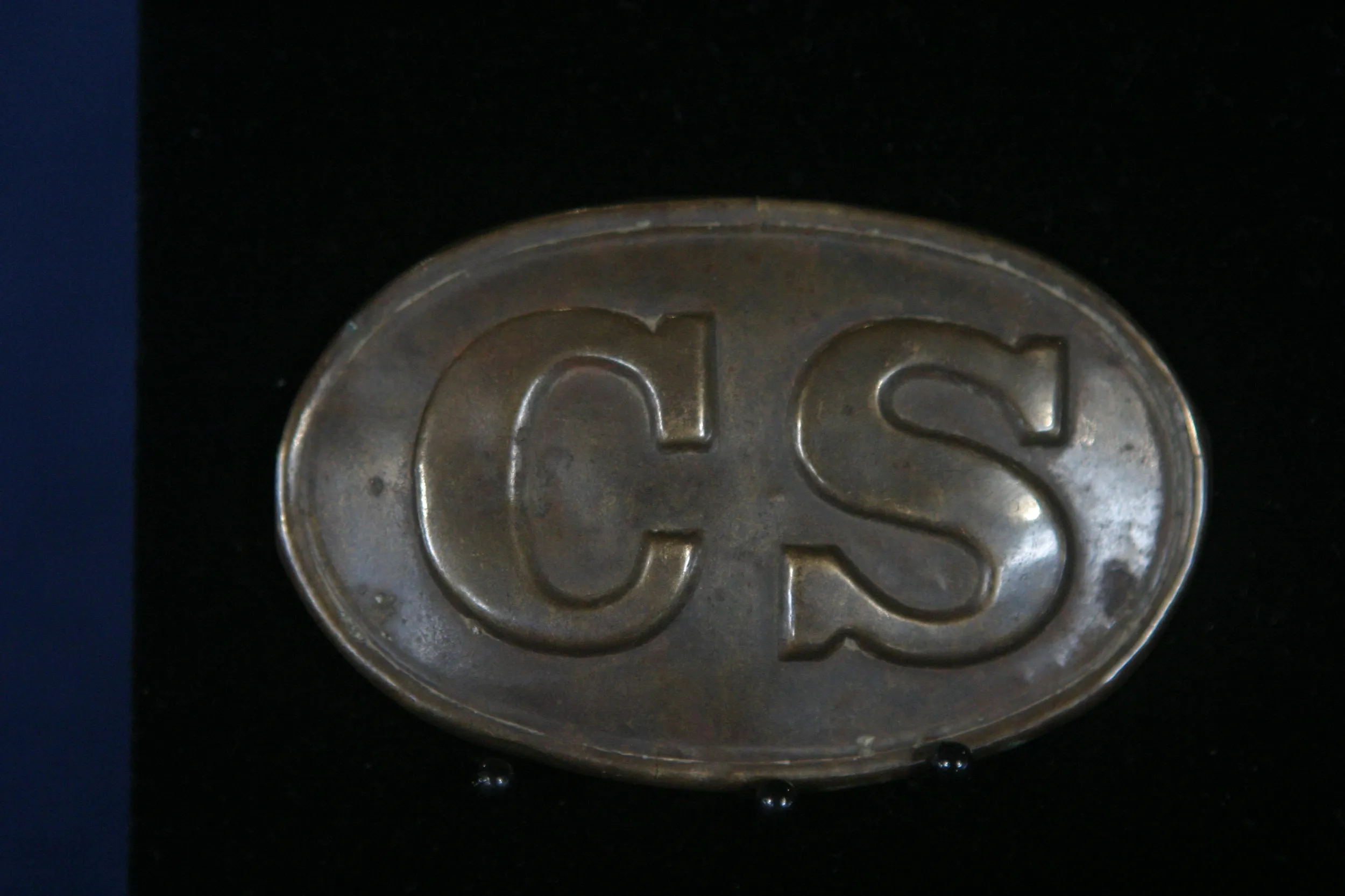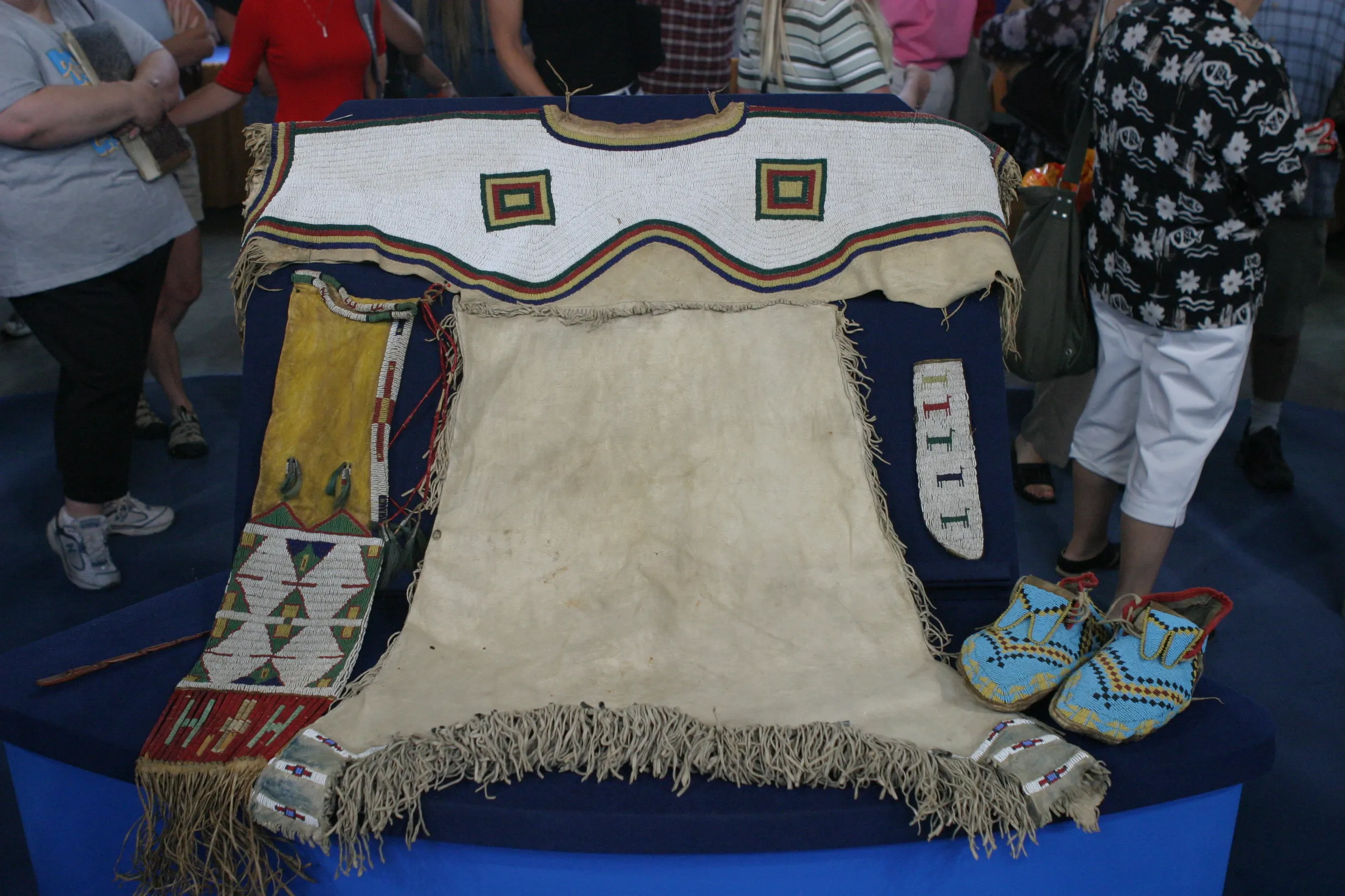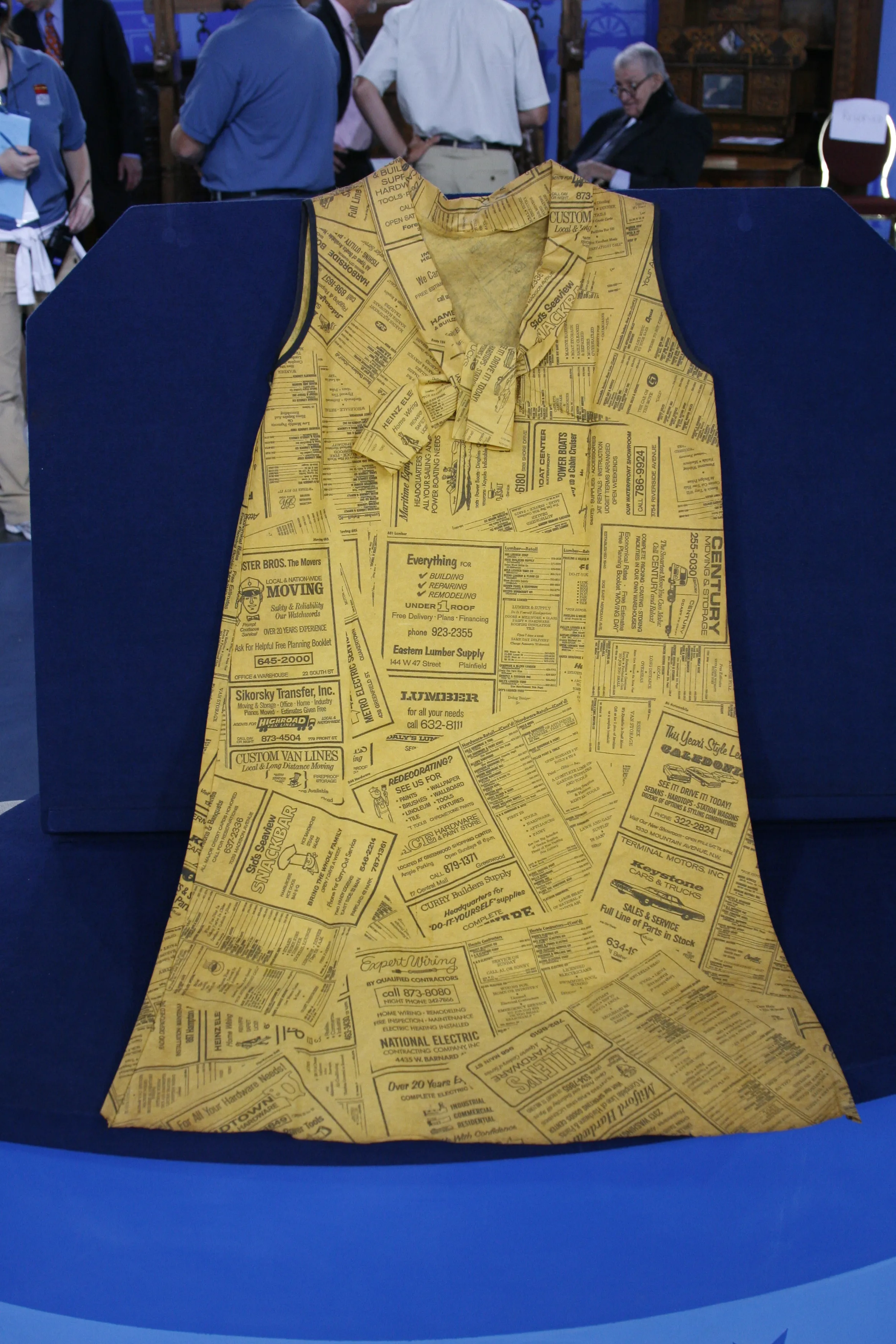GUEST: A friend of ours, who has now passed away at 99, his grandfather was raised by this veteran after the veteran's service in the Civil War, and it came down through his family, and then it came to us as a gift. We discovered that, uh, this individual was a farmer in Michigan, enlisted in 1862 in the 18th Michigan Regiment, was mustered out in 1864, and immediately re-enlisted in the 114th U.S. Colored Troops as a lieutenant, and then was subsequently promoted to captain. And then, instead of being mustered out in 1865, they were sent to Texas for two more years.
APPRAISER: Tell me about the photograph.
GUEST: He is there, uh, with the rest of his folks that he served with, the other officers in the corps, and they're all White, as you can see.
APPRAISER: And somebody has put a little graffiti on there and, uh, drawn an arrow.
GUEST: Yeah.
APPRAISER: Is, is that the, the individual?
GUEST: Yes, that is the individual. His name was Ludlum Drake.
APPRAISER: Of his service in the 18th, did he rise to become an officer in there, or did he serve as an enlisted man?
GUEST: No, he was, uh, he was mustered out as a private.
APPRAISER: So the advent of the USCT, the U.S. Colored Troops, really gave African Americans an opportunity to participate, yet again, in fighting for their own freedom and for the unification of the nation. The Navy was integrated at this time. There were, uh, Blacks and Whites serving side by side on U.S. warships... Mm-hmm. ...during the American Civil War. The Army, not so much, and there was a lot of resistance to this at the time.
GUEST: Hm.
APPRAISER: Not everybody wearing Union blue believed in emancipation.
GUEST: That's correct.
APPRAISER: Uh, a lot of them were fighting more to keep the country together. These individuals were in Kentucky, and then over in Virginia, I believe.
GUEST: Correct.
APPRAISER: And what did they do in Virginia?
GUEST: They were present at, uh, the siege at Petersburg. They were also there at, uh, the siege of Richmond. And in fact, he wrote a letter home the night Richmond fell. Then they subsequently were at, uh, Appomattox and Appomattox Court House for the surrender before they were sent down to Texas.
APPRAISER: If you put yourself in the mindset of the men that he led in particular, imagine being there when they furl those Confederate flags and stack arms, and it's over, and the Confederacy is no more.
GUEST: That's right.
APPRAISER: And they're there under arms observing this.
GUEST: Mm-hmm.
APPRAISER: That had to be tremendous.
GUEST: Indeed.
APPRAISER: So when he was a private in the 18th Michigan, he would have not had anything as fancy as what we see here today. What you have brought us is his officer's sash, his 1850 foot officer's sword, and this wonderful officer's coat, custom-done, as a lot of officer's uniforms were, a little extra embellishment, with the velvet collar.
GUEST: Mm-hmm.
APPRAISER: And then this, uh, grosgrain trim on the front. He's got a nice quilted lining, and by looking at the threads securing the back of the buttons, we can determine that these are original to the coat. There were about 179,000 African Americans who served their country during the American Civil War. About 40,000 of them perished, 10,000 from battle casualties-- and these are rough numbers-- and about 30,000 from disease.
GUEST: Mm-hmm.
APPRAISER: Uh, the same as the rest of the Army, but that's ten percent of the Union Army towards the end. It would be more rare-- not more valuable, because of his history, but more rare-- had he kept his private's coat from the 18th Michigan...
GUEST: Oh, really?
APPRAISER: ...than the officer's coat. Because when you are commissioned an officer, you have to buy your own stuff, which means you're more than likely to take it home and put it away in the chest than if you had the, the issue item. A retail value...
GUEST: Mm-hmm.
APPRAISER: ...on this would be between $10,000 and $12,000.
GUEST: Really? (chuckles) (voice trembles): That is a surprise. I had no idea.
APPRAISER: For insurance, I would put at least $15,000 on it.
GUEST: Really?
APPRAISER: If it was anybody else in the American Civil War not associated with the USCT, you have about $4,000 to $5,000 worth of material.
GUEST: Yeah.
